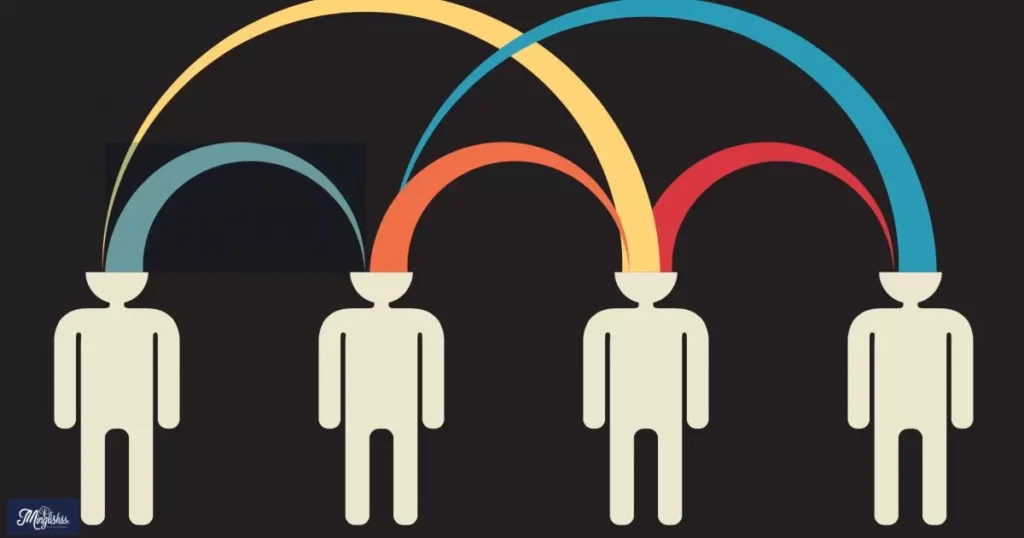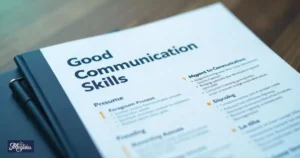“If you need any further clarification, please let me know.”
In professional settings, ensuring that your message is understood is crucial for effective communication. Instead of simply asking, “Does that make sense?” which can sometimes be perceived as informal or vague, using more polished and professional expressions can enhance clarity and encourage constructive feedback. Choosing the right phrasing helps to maintain a professional tone while confirming understanding.
Expressing the need for confirmation in a professional manner not only reflects well on your communication skills but also fosters a clearer exchange of information. By opting for formal and courteous phrases, you ensure that your audience feels respected and encouraged to seek further clarification if needed. This approach enhances the overall effectiveness of your communication.
This guide will explore a range of professional ways to inquire about understanding, providing various expressions suited to different contexts. These alternatives will help you communicate more effectively and professionally, ensuring that your message is both clear and well-received.
25 Professional Ways to Say “Does That Make Sense?”
1. “Is this explanation clear for you?”
Scenario: After providing detailed information.
Explanation: Politely asks if the explanation provided is understood.
Additional Tip: Use this when you want to confirm that your detailed explanation is clear.
2. “Do you need any further clarification on this point?”
Scenario: Following a complex explanation.
Explanation: Offers an opportunity for additional clarification if needed.
Additional Tip: Ideal for complex topics where further details might be necessary.
3. “Is there anything in this that requires further elaboration?”
Scenario: After discussing detailed content.
Explanation: Asks if any part of the discussion needs more explanation.
Additional Tip: Use this to ensure all aspects of your explanation are understood.
4. “Would you like me to provide more details on this subject?”
Scenario: When a topic might need more in-depth explanation.
Explanation: Offers to provide additional information if needed.
Additional Tip: Useful for topics that may benefit from further elaboration.
5. “Is the information provided satisfactory?”
Scenario: After delivering important information.
Explanation: Inquires if the information given meets the recipient’s needs.
Additional Tip: Helps gauge whether additional information or clarification is required.
6. “Are there any aspects of this that you would like to discuss further?”
Scenario: Following a thorough explanation or presentation.
Explanation: Asks if any part of the discussion requires further conversation.
Additional Tip: Encourages open dialogue and ensures comprehensive understanding.
7. “Do you feel comfortable with the information shared so far?”

Scenario: After presenting key details or data.
Explanation: Checks if the recipient is comfortable with the given information.
Additional Tip: Useful for gauging comfort level and understanding of the content.
8. “Would you like me to clarify any part of this information?”
Scenario: When offering detailed or technical information.
Explanation: Offers to clarify any part of the information provided.
Additional Tip: Ideal for technical or detailed discussions where clarification might be needed.
9. “Is everything I’ve explained so far clear to you?”
Scenario: After a detailed discussion or presentation.
Explanation: Asks if the explanation provided is clear and understandable.
Additional Tip: Ensures that all parts of the explanation are well understood.
10. “Are there any points that need further explanation?”
Scenario: Following a detailed explanation or meeting.
Explanation: Inquires if any specific points need additional detail.
Additional Tip: Helps to identify areas that might need more focus.
11. “Do you have any questions about what has been discussed?”
Scenario: After covering a complex topic or information.
Explanation: Invites questions to ensure understanding.
Additional Tip: Encourages questions to clarify any uncertainties.
12. “Is there anything you’d like me to go over again?”
Scenario: When someone might need to review parts of the discussion.
Explanation: Offers to repeat or elaborate on any parts of the information.
Additional Tip: Useful for ensuring that no key points are missed.
Proper Ways to Sign a Letter on Behalf of Someone Else
13. “Does this make sense in the context of what we’ve covered?”
Scenario: After explaining a concept in detail.
Explanation: Checks if the explanation fits well with the context of the discussion.
Additional Tip: Ensures coherence and understanding in relation to the overall topic.
14. “Is there any additional information you need to fully understand this?”
Scenario: When someone might require more information to grasp the content.
Explanation: Asks if more details are needed for complete understanding.
Additional Tip: Helps to identify if further information is required.
15. “Have I addressed all your concerns regarding this topic?”
Scenario: After addressing multiple aspects of a topic.
Explanation: Ensures that all concerns or questions have been covered.
Additional Tip: Ensures thorough coverage of all relevant points.
16. “Do you need any more details to clarify this issue?”
Scenario: When discussing a complex issue.
Explanation: Offers additional details to clarify any issues.
Additional Tip: Useful for addressing complex topics that may require more details.
17. “Is there anything unclear about the information I’ve provided?”
Scenario: Following a detailed explanation or presentation.
Explanation: Inquires if any part of the information is unclear.
Additional Tip: Helps to pinpoint areas that may need further clarification.
18. “Would it be helpful if I explained this in a different way?”
Scenario: When someone might benefit from a different explanation approach.
Explanation: Offers to rephrase or present information differently if needed.
Additional Tip: Useful for varying communication styles to enhance understanding.
19. “Do you need any further support to understand this information?”
Scenario: When additional support might be needed.
Explanation: Offers additional support or clarification if required.
Additional Tip: Ensures that the recipient has all necessary support for understanding.
20. “Is there any part of this that you’d like more information about?”
Scenario: After providing a general overview or summary.
Explanation: Asks if more information is needed about any specific part.
Additional Tip: Helps to focus on areas of interest or concern.
21. “Have I been clear in explaining this concept to you?”
Scenario: When explaining a specific concept or idea.
Explanation: Asks if the explanation of the concept has been clear.
Additional Tip: Ensures that the concept is understood as intended.
22. “Would you like me to clarify any specific details?”

Scenario: When detailed information might need further clarification.
Explanation: Offers to clarify specific details if needed.
Additional Tip: Useful for focusing on particular aspects that might be confusing.
23. “Do you have any reservations or questions about what we’ve discussed?”
Scenario: After a comprehensive discussion.
Explanation: Inquires if there are any reservations or questions.
Additional Tip: Encourages openness and ensures all concerns are addressed.
24. “Is there any additional context or background needed for this information?”
Scenario: When background information might enhance understanding.
Explanation: Asks if more context or background is needed.
Additional Tip: Helps to provide a fuller picture if required.
25. “Would it be beneficial to revisit any of the points we’ve covered?”
Scenario: After covering several points or details.
Explanation: Offers to revisit any points that may need more attention.
Additional Tip: Ensures thorough understanding by revisiting key points.
Pros and Cons Table
| Pros | Cons |
| Encourages clarity: Formal expressions ensure the recipient understands the information. | May seem too formal: Overly formal language might not suit all situations. |
| Promotes professionalism: Reflects a polished and respectful approach to communication. | Can lead to over-explanation: May result in unnecessary additional details. |
| Facilitates better feedback: Opens the door for constructive feedback and questions. | Might delay communication: Extended formalities can slow down the communication process. |
| Ensures thorough understanding: Helps ensure that all aspects of the information are clear. | Requires careful phrasing: Must be phrased carefully to avoid misunderstandings. |
| Builds a positive image: Demonstrates a commitment to clear and effective communication. | Might come across as repetitive: Repeatedly checking for understanding can seem redundant. |
Conclusion
Using professional expressions to confirm understanding not only ensures that your communication is clear but also demonstrates a high level of respect and consideration. By opting for formal alternatives to “Does that make sense?”, you foster a more effective and respectful dialogue. This approach enhances the likelihood of receiving valuable feedback and contributes to more productive and professional interactions.
Answer to key Question
Q1: Why should I use formal expressions to check understanding? A1: Formal expressions ensure that your request for confirmation is clear and respectful, enhancing professional communication.
Q2: How can I decide which formal expression to use? A2: Choose based on the context and the formality of the situation. For formal settings, use more polished language.
Q3: Is it necessary to use formal language in all situations? A3: Not always. While formal language is preferred in professional settings, informal contexts may allow for a more casual approach.
Q4: How can I balance professionalism with approachability? A4: Maintain a polite and respectful tone while avoiding overly complex language to remain approachable.
Q5: What if the recipient still does not understand despite using formal expressions? A5: Offer additional explanations or alternative ways to clarify the information as needed.

Hi, I’m Isabel: I’m passionate about turning language learning into a fun adventure. I believe in making every word exciting and memorable.










